Welcome to the ultimate guide on driving more users to your site – “30+ Ways to Increase Traffic to Your Website”. ⚡ This dynamic guide offers 30+ actionable and effective strategies to boost your website’s visibility, increase visitors, and help you ace the digital competition.
This journey to skyrocketing traffic numbers includes:
- Learning how to collaborate with other brands to expand your digital presence,
- Implementing mobile-friendly designs to cater to a broader audience,
- Leveraging analytics to understand your audience for personalized content and much more.
Each method brings you closer to your website’s potential for increased engagement and conversions. And remember the role of tools such as Plerdy in your journey, assisting in UX & SEO analysis to ensure your site is as user-friendly and optimized as possible. Roll up your sleeves, and let’s make your website a bustling digital hub!
1. Prioritize SEO
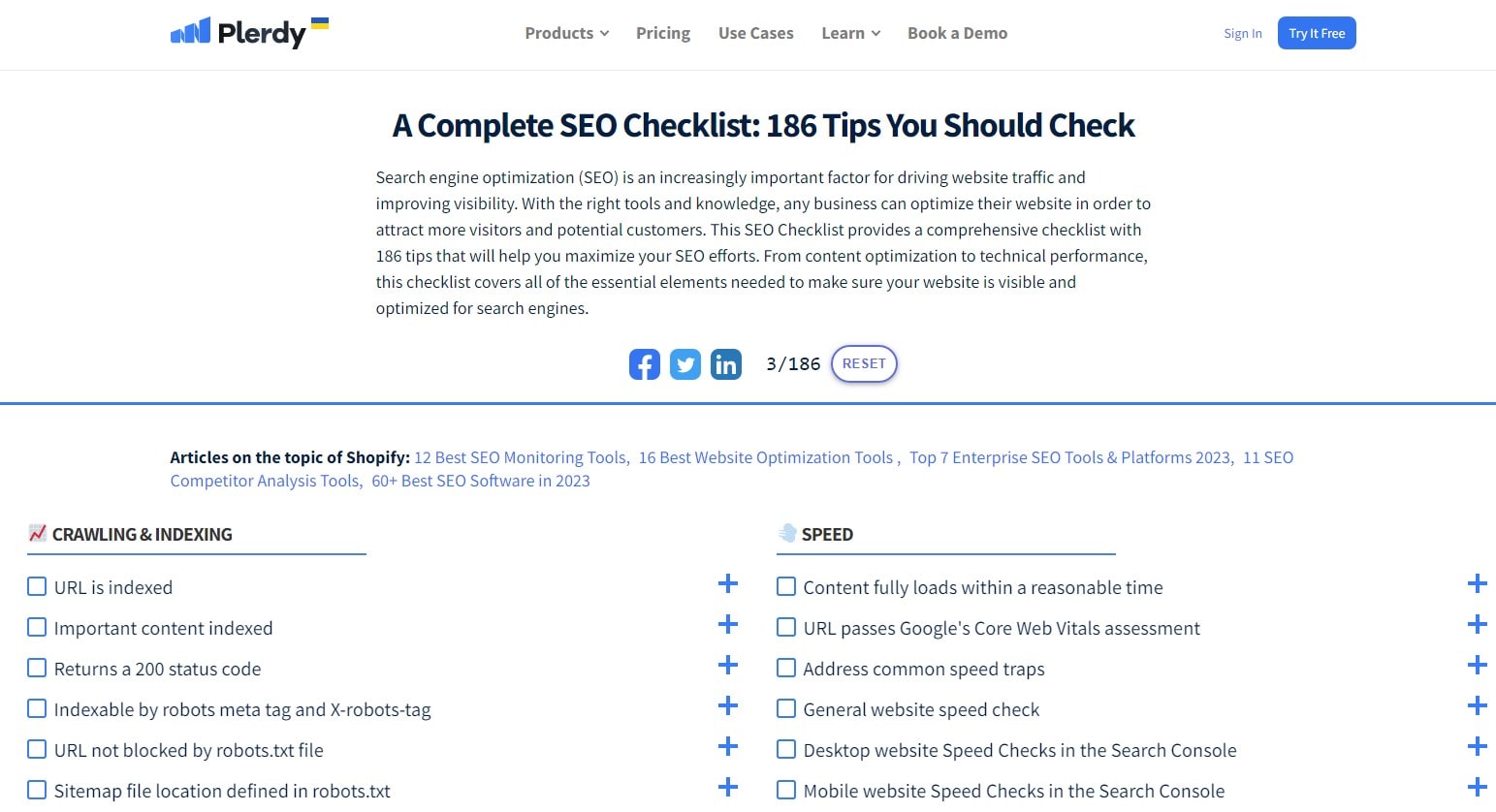
Leveraging Search Engine Optimization (SEO) can make a substantial difference in boosting website traffic. SEO is a key driver behind digital visibility and a top-tier strategy to improve your website’s rank on search engines. Businesses like Plerdy have witnessed considerable growth and increased traffic by prioritizing SEO in their marketing efforts.
1.1. Keyword Research
Keyword Research is a crucial first step in optimizing your website’s SEO. Identifying and incorporating relevant, high-traffic keywords into your website’s content can amplify your search engine visibility. For instance, Plerdy used keyword tools like Ahrefs or Google Keyword Planner to discover their niche’s most popular and pertinent keywords. Their thorough keyword research gave them the insights needed to create content that resonated with their target audience and resulted in higher search engine rankings.
1.2. On-Page SEO
Next, perfecting your On-Page SEO is instrumental in guiding more traffic to your site. This encompasses optimizing meta tags and URLs with your targeted keywords, enhancing readability and user experience, and ensuring that your content effectively answers your audience’s queries. For instance, Plerdy’s approach to on-page SEO involved creating engaging, keyword-rich titles and meta descriptions, substantially improving their click-through rates from search engine results pages.
1.3. Technical SEO
Lastly, a strong Technical SEO foundation is vital in making your website more crawlable and indexable for search engines. This includes securing your website with HTTPS, enhancing site speed, creating an XML sitemap, and ensuring your website is mobile-friendly. For example, Plerdy enhanced its website’s loading speed and ensured mobile optimization, leading to a better user experience and reduced bounce rates.
Here’s a brief rundown of their effective SEO strategy:
- Comprehensive keyword research using SEMrush, Ahrefs and Google Keyword Planner
- On-Page SEO enhancement with optimized title tags, meta descriptions, and H1
- Technical SEO focus on HTTPS security, site speed, mobile optimization, and XML sitemap creation
In conclusion, prioritizing SEO is no longer an option – it’s necessary for businesses striving to increase website traffic. Companies like Plerdy have mastered the art of SEO, leading to impressive increases in traffic and growth. By focusing on Keyword Research, On-Page SEO, and Technical SEO, you can significantly amplify your digital visibility and guide more visitors to your website.
2. Develop High Quality, Original Content
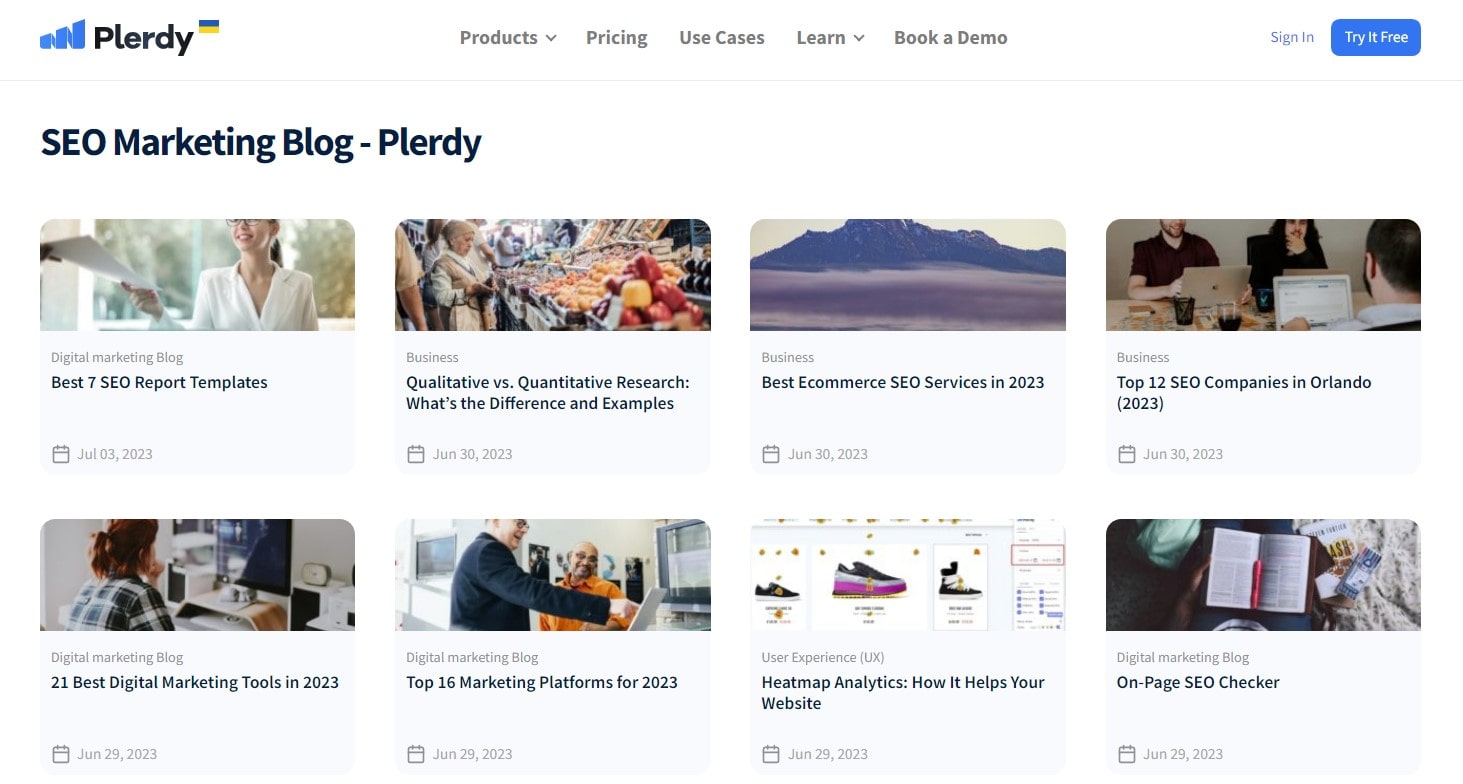
Crafting high-quality, original content is pivotal in bolstering your website traffic. Focusing on delivering value and freshness to your audience helps attract, engage, and retain visitors, boosting your site’s visibility and popularity.
2.1. Use of Relevant Images and Videos
One effective approach is the use of relevant content. A vibrant mix of text and multimedia enriches your content, making it more appealing and engaging to your audience. For example, an e-commerce website could benefit tremendously by incorporating high-quality product images, interactive 360-degree views, and informative product demo videos. This kind of visual content offers a comprehensive understanding of the products. It entices visitors to explore more, thereby increasing the likelihood of conversions.
2.2. Write In-Depth Guides
Another aspect worth mentioning is creating In-Depth guides. Long-form content packed with valuable insights resonates with your audience and positions you as an authority in your niche. Consider the case of a health and wellness website, which could offer in-depth guides on topics like mental health, fitness routines, or nutritious recipes. By diving deep into the subjects and providing readers with actionable tips, the site can build a loyal audience and significantly enhance website traffic.
Here is a quick recap of strategies to consider when developing high-quality, original content:
- Incorporating relevant images and videos adds depth and visual appeal to your content.
- Crafting in-depth guides to position yourself as an authority and engage your audience with valuable insights.
In the final analysis, increasing traffic to your website hinges on your ability to consistently produce high-quality, original content. Whether through enriching your posts with relevant images and videos or crafting comprehensive guides, your ultimate aim should be to provide immense value to your audience. Doing so will bolster your SEO efforts and help create a loyal audience base, which is instrumental in driving sustainable, long-term growth in website traffic.
3. Update Your Content Regularly
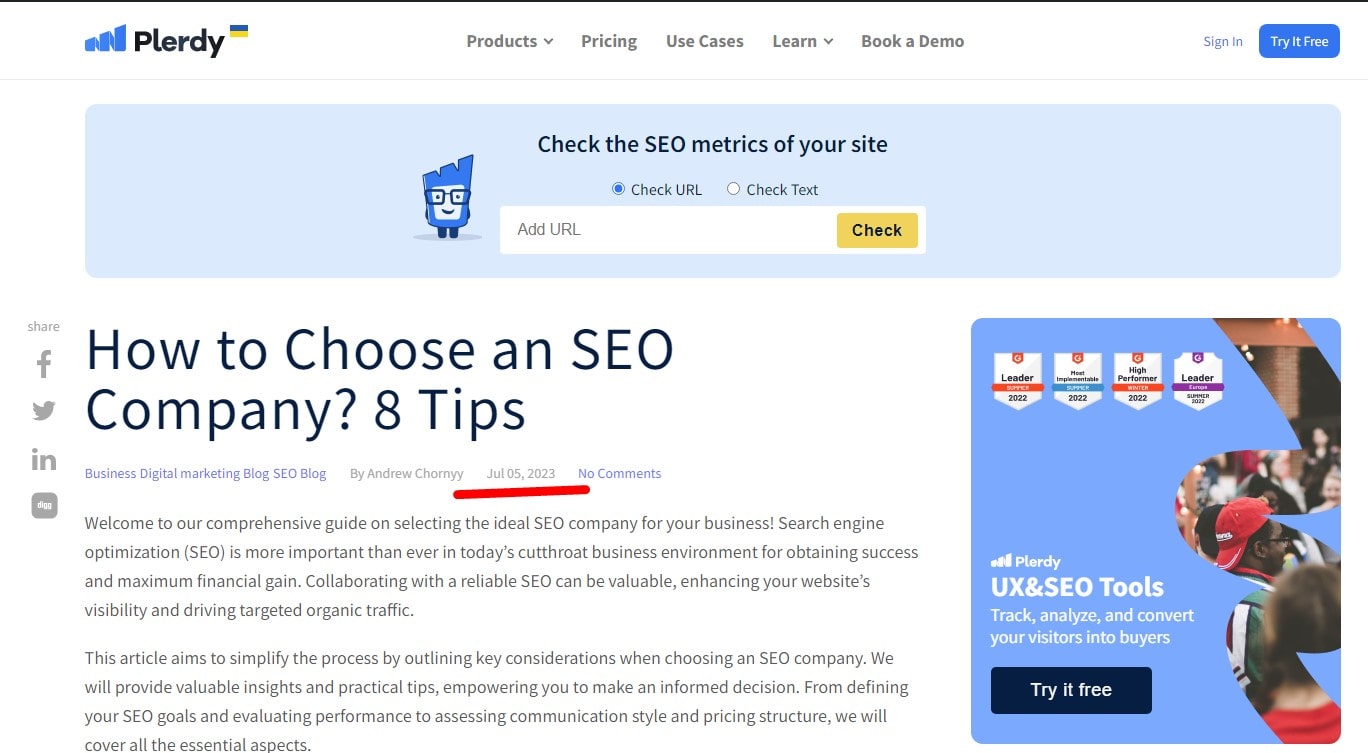
Keeping your website’s content current and updated is a driving force in ensuring steady and increased traffic flow. Stale content can push your audience away – regular updates, on the other hand, can draw them in and keep them coming back for more.
3.1. Repurpose Old Content
A potent strategy in this regard is Repurposing Old Content. Bringing a fresh perspective to existing content can re-engage your audience and bring in new visitors. Consider a tech blog that has published articles on the use of smartphones – the blog can repurpose these articles by updating them with the latest models, features, and software updates. This way, the website stays relevant and caters to its tech-savvy audience’s evolving needs, encouraging more visits.
3.2. Refresh Your Content with New Information
Another crucial facet of updating content is to refresh your content with new value data. The digital landscape is ever-evolving, and staying abreast of these changes can significantly boost your website’s traffic. For instance, a finance website should regularly update its articles on investment strategies, tax laws, or cryptocurrency trends based on the latest developments. This ensures the audience receives up-to-date information, enhancing the website’s credibility and driving repeat visits.
Here’s a concise overview of how to keep your content fresh and engaging:
- Repurpose old content with fresh perspectives and current information to re-engage your audience.
- Regularly refresh your content with new information, keeping pace with the latest industry developments.
Updating your content regularly is an essential strategy for increasing website traffic. Whether repurposing existing content with fresh insights or staying on top of the latest trends and information, these measures can help ensure your website remains a go-to resource for your audience. This approach caters to your audience’s evolving needs. It significantly enhances your site’s credibility, leading to an impressive boost in website traffic.
4. Utilize Social Media Platforms
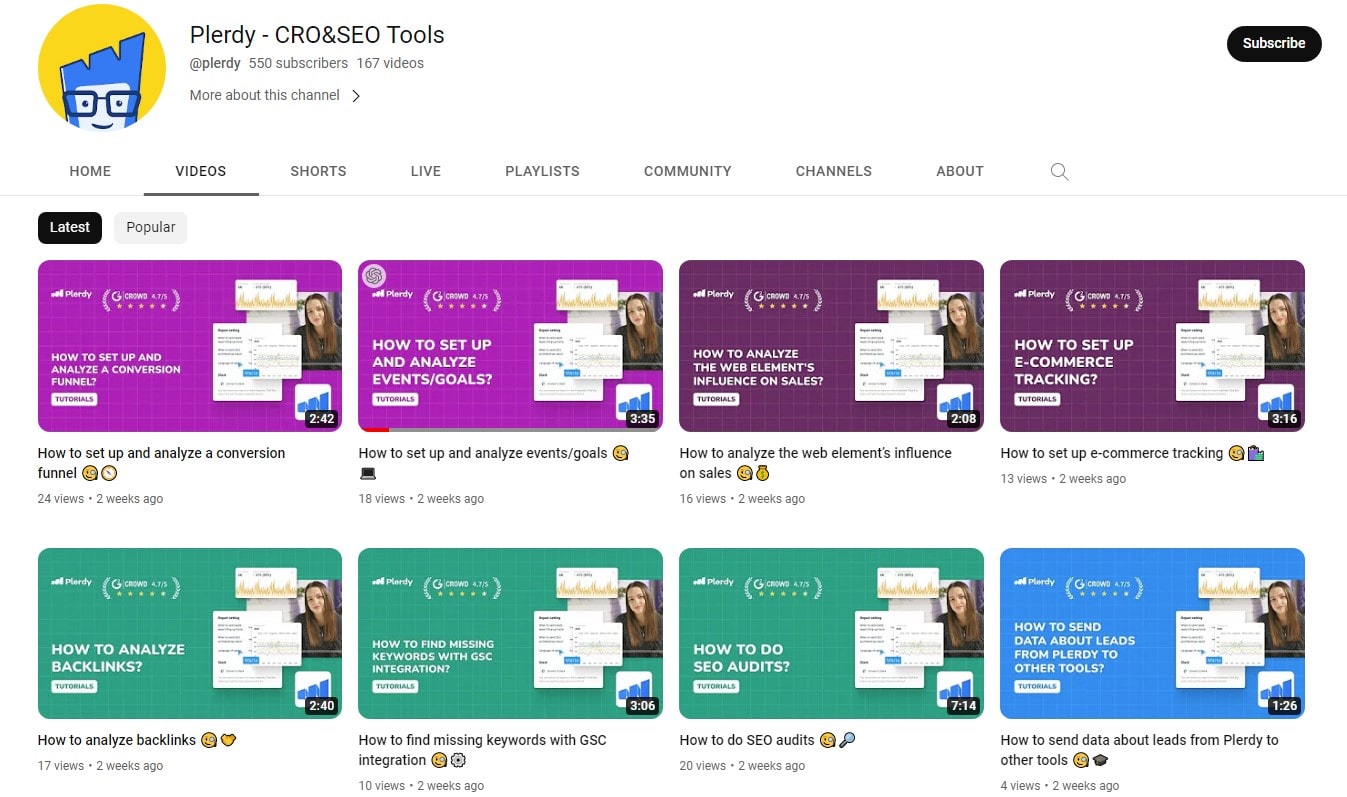
Social media platforms have transformed into bustling digital marketplaces, teeming with potential visitors for your website. Mastering the art of social media can pave the way for a dramatic increase in your website traffic.
4.1. Sharing Content on Social Media
One of the key strategies here is Creating Engaging Posts. Social media thrives on interaction – posts encouraging comments, shares, and likes can significantly extend your reach. For instance, a travel website might post breathtaking images of destinations, ask followers about their dream vacation spots, or share insider tips on affordable travel. These engaging posts can ignite conversations, encourage shares, and lead more people to visit the website.
4.2. Social Media Ads
Another vital approach is Promoting Your Content. Sharing links to your latest blog posts or website updates can attract your social media followers to your site. A lifestyle blog, for instance, might share its latest article on “Summer Fashion Trends” on its Facebook, Instagram, and Twitter pages. The audience, intrigued by the title and the post, is likely to click on the link, increasing website traffic.
Here’s a summary of how to harness social media to boost website traffic:
- Create engaging posts to foster interaction and extend your reach on social media platforms.
- Actively promote your content on your social media channels to guide followers to your website.
In conclusion, effectively utilizing social media platforms can be a game-changing strategy for increasing website traffic. By creating engaging posts and promoting your content, you can reach a wider audience and guide them to your website. It’s a powerful way to leverage the popularity of social media platforms to your advantage, driving substantial and consistent traffic growth for your website.
5. Encourage Engagement on Social Media
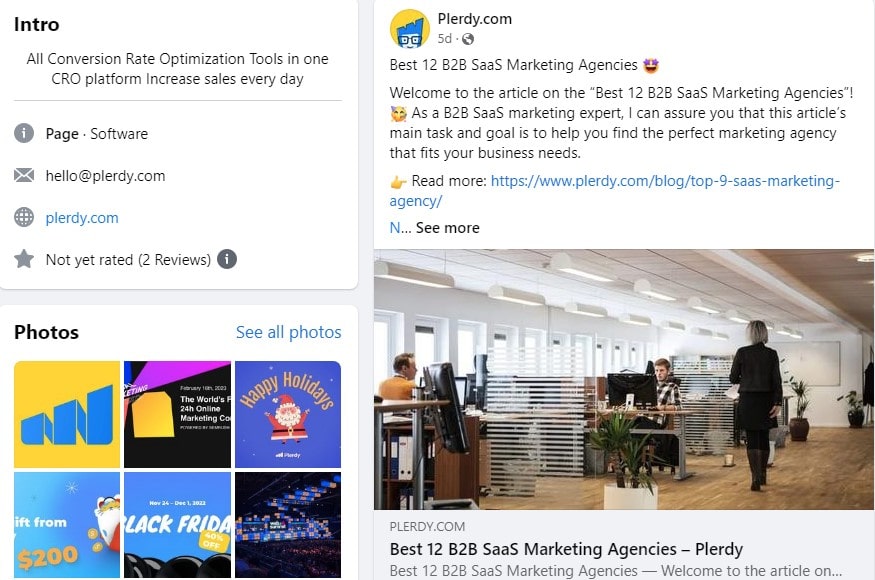
Cultivating an engaged community on social media can significantly amplify your website traffic. The more your audience interacts with your posts, the greater their chances of exploring your website and sharing your content with others.
5.1. User-Generated Content
A powerful approach to drive engagement is Initiating Conversations. Engaging your followers in meaningful discussions can build strong relationships and increase visibility. An online bookstore, for instance, might post thought-provoking questions related to a popular book or author, sparking interesting discussions among readers and inviting them to visit the website for more content.
5.2. Social Media Contests
Another crucial strategy is Hosting Contests and Giveaways. These activities create a buzz around your brand and encourage followers to visit your website. An online clothing store could host a style contest, asking followers to create outfits from their products and share the photos on their profiles. The store can offer discounts or gifts for winners, encouraging more visits to their website.
To summarize, here are some potent ways to encourage engagement on social media:
- Initiate conversations to build relationships with your followers and increase brand visibility.
- Holding competitions and giving away prizes is a great way to generate buzz and encourage followers to check out your website.
In conclusion, encouraging social media engagement is a potent tool for increasing traffic to your website. Initiating conversations and hosting contests can help build an active, engaged community around your brand. This approach not only enhances your social media presence but also directs a steady stream of traffic to your website, significantly boosting your visibility and growth.
6. Influencer Marketing

Influencer marketing has emerged as an impactful strategy for driving significant website traffic. Aligning with the right influencers can extend your reach, enhance brand awareness, and attract more visitors to your website.
6.1. Collaborate with Influencers
A fundamental aspect of this strategy is Choosing the Right Influencers. Selecting influencers whose followers align with your target audience can maximize the effectiveness of your efforts. For example, a gourmet coffee brand might partner with influencers known for their love of coffee. They could collaborate on sponsored posts, where the influencer shares their experience with the brand’s products, including a link to the website. This strategy can direct the influencer’s followers to the brand’s site, increasing traffic.
6.2. Sponsored Posts
An additional approach involves Developing Strategic Partnerships. Collaborating on special projects or promotions with influencers can create a buzz and motivate potential customers to visit your website. A home decor business could partner with a well-known interior designer for a room makeover giveaway featuring products from the website. Excited followers are likely to visit the website to explore the products further, increasing website traffic.
In summary, using influencer marketing to increase website traffic involves:
- Choosing the right influencers whose audience aligns with your target market.
- Developing strategic partnerships for special projects or promotions.
In conclusion, effectively utilizing influencer marketing can significantly increase traffic to your website. By choosing the right influencers and developing strategic partnerships, businesses can reach a larger audience, boost brand awareness, and attract more potential customers to their websites. As digital landscapes evolve, influencer marketing is a powerful strategy for driving website growth.
7. Build an Email List
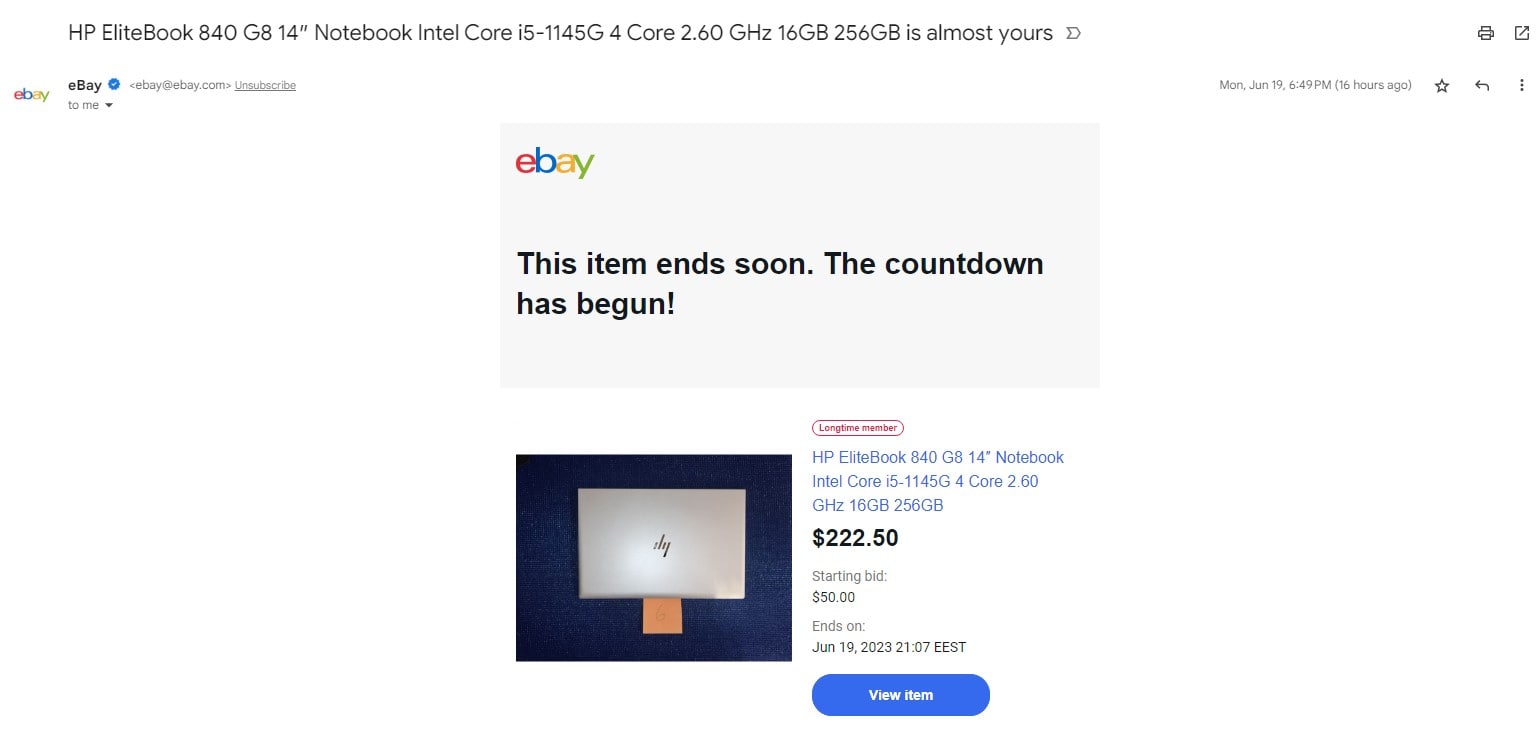
Building an email list is akin to owning a golden ticket to boosting website traffic. An email list is not just a collection of addresses. It’s an assembly of individuals interested in your content, products, or services. They’ve permitted you to engage them directly, making it an invaluable tool for driving increased traffic to your website.
7.1. Lead Magnets
One effective way to build your email list is through Website Popups. Utilizing a service like Plerdy allows you to design enticing popups for your site that invite visitors to join your mailing list. For instance, a fitness blog could offer a free downloadable workout plan in exchange for an email address. The result is a boost in email signups. It repeats traffic as users return to access their plan and explore additional content.
7.2. Subscription Pop-Ups
Creating Compelling Content is another essential step in growing your list. Develop and share content that truly resonates with your audience; they’ll be more inclined to sign up to receive more. A tech website, for instance, might produce in-depth reviews of the latest gadgets, driving subscribers who want to stay in the know about the newest technology.
Here are some steps you can take to build a robust email list:
- Design attractive website popups with a service like Plerdy.
- Create engaging content that encourages subscribers.
Once you’ve built your email list, it’s time to leverage it to increase traffic to your website. Regularly send newsletters or email blasts featuring your latest content or exclusive promotions. By offering valuable content directly to their inboxes, you’re inviting subscribers to click through to your site, driving traffic and deepening their engagement with your brand.
Building and utilizing an email list can boost your website traffic. By employing strategic tools like Plerdy’s popups and producing compelling content, you’re well on growing your subscriber list and increased traffic to your site. This direct line of communication with your audience is a key driver in attracting and retaining website visitors.
8. Send Regular Newsletters
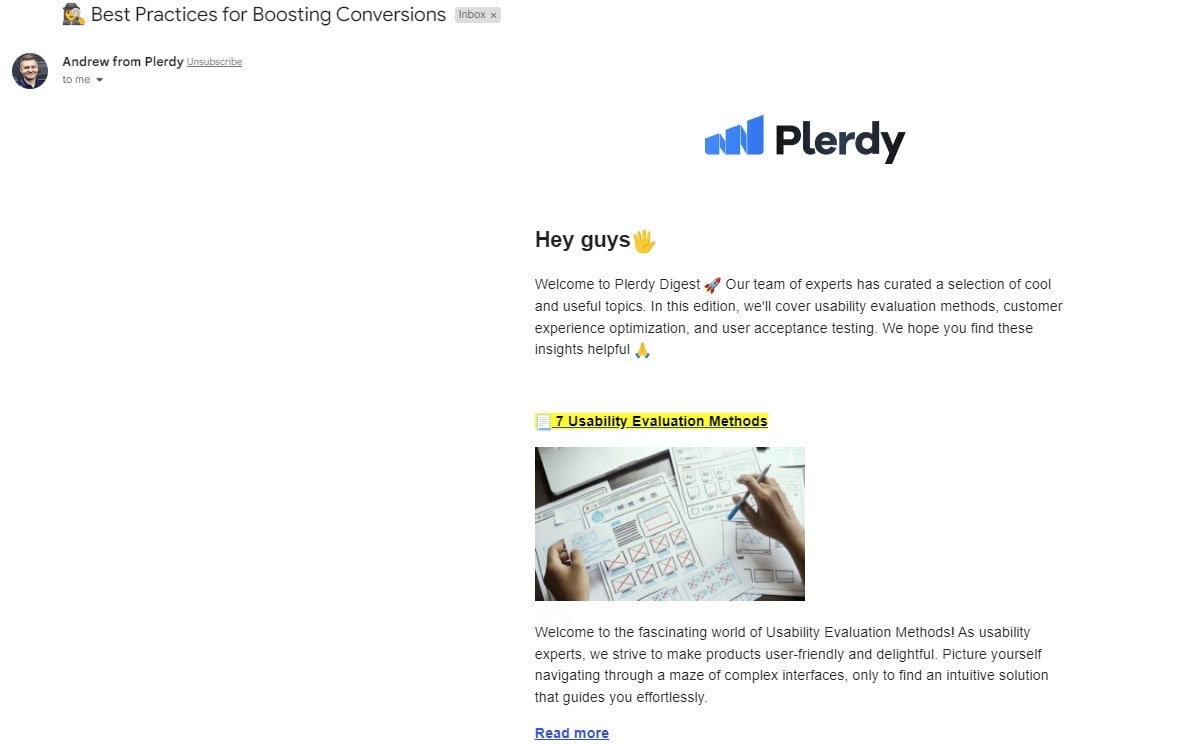
Dispatching regular newsletters to your email list is a potent tool to nurture customer relationships and drive traffic back to your website. Well-crafted newsletters can inform your audience, pique their curiosity, and prompt them to explore more on your website.
8.1. Content Sharing via Emails
Consider a blog on sustainable living practices. By issuing a bi-weekly newsletter featuring a teaser about the latest article on zero-waste lifestyle tips, you incite your readers’ interest and inspire them to click through to your website. This strategically keeps your brand fresh in their minds while perpetually driving them back to your site.
To maximize the efficacy of your newsletters, incorporate these fundamental strategies:
- Intrigue with Headlines: Create engaging, curiosity-evoking headlines that coax your audience into opening the email and reading further. For example, a culinary website might use a headline like “Unleash a Symphony of Flavors with this Simple Ingredient.”
- Brevity is Key: Keep your content concise and digestible. A clear, short teaser accompanied by a “Read More” link that takes the reader to your website is an effective approach.
- Provide Value: Offer your readers something beneficial in every newsletter. Whether tips, exclusive content, or special promotions, make them look forward to your emails.
- Frequency Matters: Find the right balance in how often you send newsletters. Too often can overwhelm and lead to unsubscriptions, while too infrequently may cause your brand to be forgotten.
- Personalization: Tailoring the newsletter to individual subscribers increases engagement. Use their names, reference past interactions, and segment your list to ensure the content they receive is relevant to them.
When done right, newsletters can push your readers to return to your website, bolstering your traffic numbers over time. An art blog, for instance, can dispatch monthly newsletters spotlighting a specific artist and featuring a link to a more in-depth profile on their website. This gives their readers a compelling reason to revisit the site and explore additional content.
In conclusion, regular newsletters provide a consistent touchpoint with your audience, reminding them of your value and enticing them to continue engaging with your brand. It’s a practice that fuels brand loyalty, increases website traffic, and enhances the overall user experience.
9. Amplify Website Traffic with Google Ads
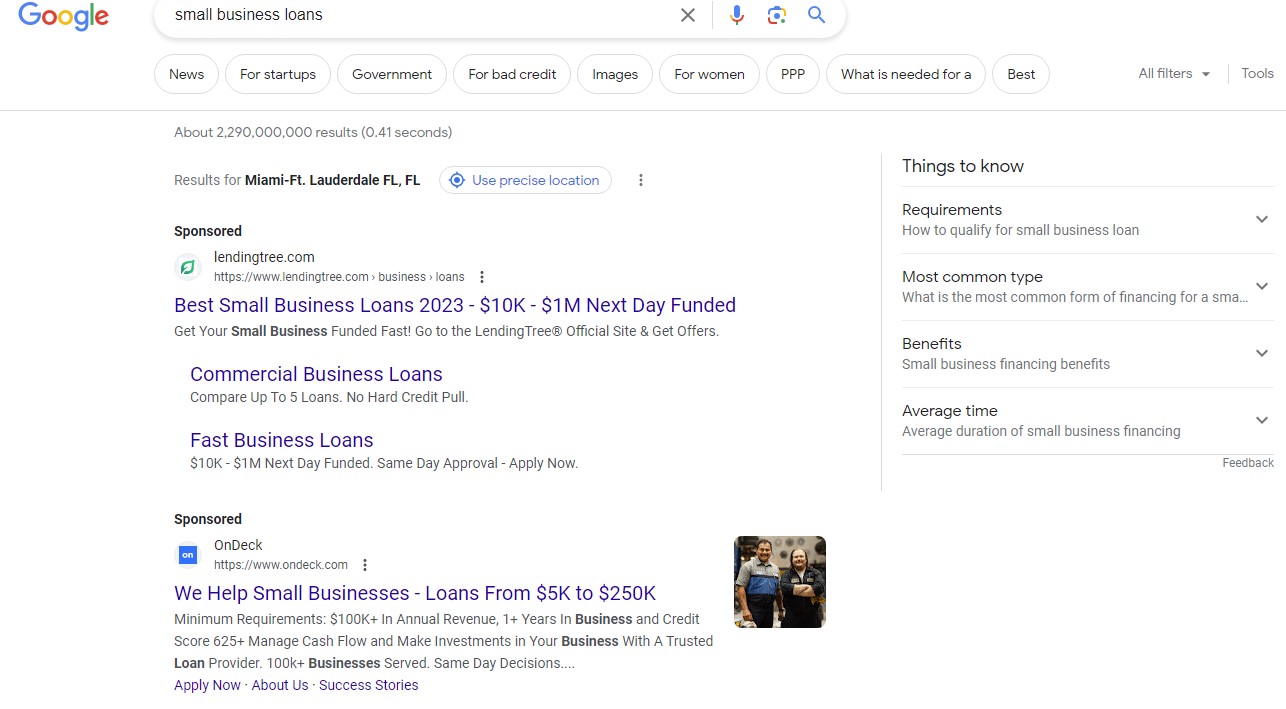
Harnessing the power of Google Ads can fast-track your quest to increase website traffic. This pay-per-click advertising platform presents an opportunity to reach potential visitors actively searching for your products or services. For example, an online clothing retailer can use Google Ads to target users searching for ‘summer dresses’ or ‘men’s winter jackets.’
An edge that Google Ads holds is its expansive reach – Google processes over 3.5 billion searches per day. That’s an ocean of potential visitors to your website! Also, the platform lets you target ads based on search terms, demographics, interests, and more.
To optimally leverage Google Ads, consider these crucial strategies:
- Keyword Selection: Carefully choose your keywords. Selecting highly relevant and specific keywords can help connect your ads with the right audience.
- Ad Quality: High-quality ads can lead to higher click-through rates. Ensure your ads are clear, compelling, and have a strong call to action.
- Landing Page Relevance: The landing page you direct your traffic to should match the content of your ad. If your ad is about a ‘special offer on summer dresses,’ the landing page should reflect that.
- Monitor and Tweak: Keep track of your campaigns and adjust based on performance. Google Ads provides a wealth of data to help you optimize your ads for better results.
Take the case of a local fitness center that wants to attract more members. By using Google Ads, they can specifically target people within their locality searching for ‘gyms near me’ or ‘fitness classes.’ This drives highly relevant traffic to their website, increasing the chances of conversion.
Google Ads also offers retargeting capabilities, allowing you to serve ads to people who have previously visited your website but did not purchase or fill out a contact form. For instance, an online bookstore can retarget users who browsed mystery novels but left without buying. This keeps their brand at the top of the users’ minds and lures them back to the site.
In summary, Google Ads provides a robust platform for driving targeted traffic to your website. Employing the right strategies can serve as a powerful catalyst for your website’s growth and visibility, thus contributing to a substantial increase in traffic.
10. Supercharge Website Traffic with Social Media Ads
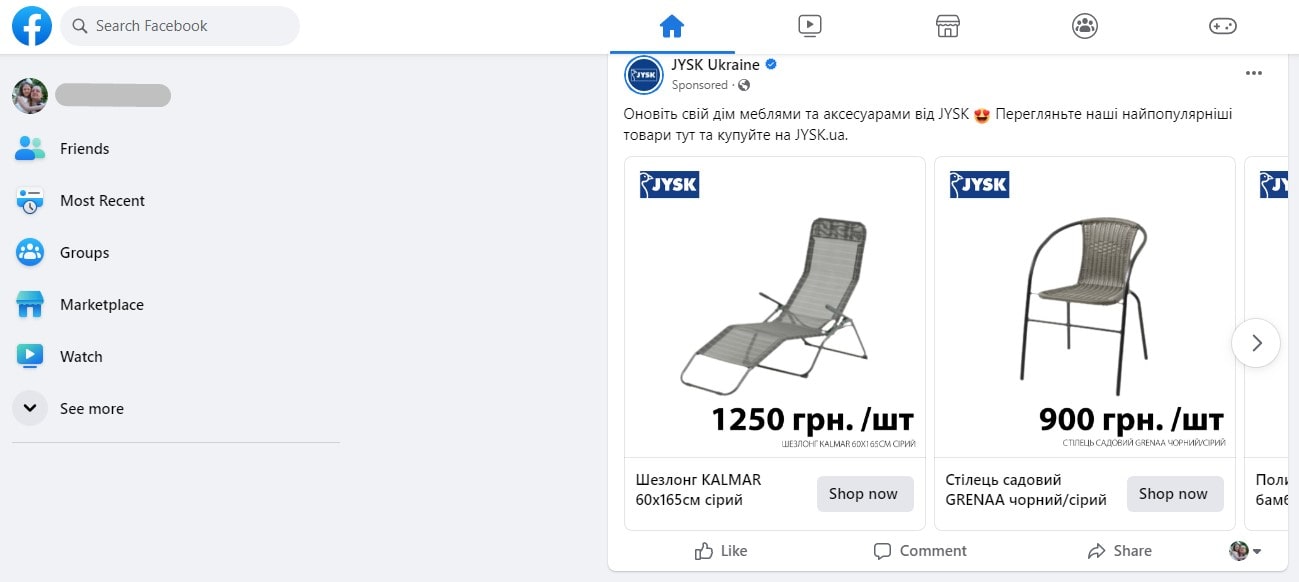
Social media platforms offer dynamic advertising opportunities that can effectively catapult your website traffic. Imagine being a gourmet coffee shop owner. You can utilize Facebook’s detailed targeting to reach coffee aficionados in your city or Instagram ads to showcase your delicious brews to a young, energetic audience.
One of the strengths of social media ads is the sheer volume of users. With billions of active users, platforms like Facebook, Instagram, Twitter, and LinkedIn can drive a steady stream of targeted traffic to your website. You can target ads based on user demographics, interests, behaviors, and more, providing a tailored approach to reach your desired audience.
Key strategies to unlock the power of social media ads include:
- Choosing the Right Platform: Different platforms attract different demographics. LinkedIn caters to professionals, while Instagram appeals more to a younger audience.
- Crafting Engaging Ads: Your ads should be visually appealing and include a compelling call to action. For example, an online shoe store can run a visually striking ad showcasing its latest collection with a “Shop Now” button.
- Targeting and Retargeting: Utilize the platform’s targeting options to reach your ideal audience. Retargeting ads can also help bring back users who visited your website but didn’t convert.
- Testing and Refinement: Conduct A/B testing on your ads and refine them based on performance. Continuous optimization ensures your ads stay effective and relevant.
Consider a digital marketing agency aiming to expand its client base. LinkedIn ads can target business owners or marketing managers, leading them to a landing page detailing the agency’s services and successes. This focused strategy drives highly relevant traffic, increasing the chance of conversions.
Moreover, social media ads often encourage sharing, offering an additional avenue for visibility. Users sharing your ads extend their reach to an even broader audience – all without any extra cost. For instance, a catchy ad from a music streaming service might get shared by music lovers, spreading the word about the service and drawing more visitors to the website.
In essence, the strategic deployment of social media ads can act as a magnet, attracting traffic to your website. The fusion of wide reach, targeted advertising, and user engagement makes social media ads an integral part of any strategy to increase website traffic.
11. Boost Website Traffic Through Brand Collaboration

Mastering the art of collaboration can unlock fresh pools of website traffic, giving your brand exposure to audiences you may have otherwise overlooked. Imagine running an eco-friendly skincare brand – a partnership with a well-known lifestyle blogger could introduce your products to an audience keenly interested in sustainable living.
Partnering with brands that complement your own can lead to mutual benefits. Sharing audiences, resources, and skills can yield results greater than the sum of its parts. A symbiotic relationship opens doors to increased visibility, greater reach, and, ultimately, boost traffic to your website.
Here are some strategies to make the most out of brand collaborations:
- Find Complementary Brands: Identify brands that resonate with your own in terms of values, aesthetics, and audience demographics. An organic food brand might collaborate with a fitness app for a campaign promoting a healthy lifestyle.
- Leverage Each Other’s Audiences: Collaborate on content, events, or promotions to tap into each other’s audiences. For instance, clothing and shoe brands can join a joint summer sale, driving customers from both sites to check out the deals.
- Co-Create Content: Work together to create engaging content that appeals to both audiences. This might be a blog post, a YouTube video, or even an entire product line. A software development company could collaborate with an online education platform to create an entire coding course.
- Promote Each Other: Share each other’s content and shout-outs on social media. This broadens your reach and builds trust through association with a respected brand. A luxury travel agency might feature high-end hotels on its blog and social media.
For instance, two online retailers – one selling handcrafted jewelry and the other selling bespoke clothing – could collaborate for a ‘complete look’ campaign. Cross-promoting each other’s products introduces their respective audiences to a complementary brand, thereby increasing potential traffic and sales.
Similarly, a digital marketing blog could collaborate with a web design platform. They may collaborate on a website construction and marketing guide for both audiences. As they share this guide on their respective platforms, they direct traffic to each other’s websites.
In essence, collaboration is a powerful tool that can propel your brand into new audience spheres, increase your website’s visibility, and lead to a surge in traffic. By joining forces with complementary brands, you can achieve milestones beyond the reach of solo efforts. Harness the power of collaboration and watch your website traffic soar.
12. Harness Industry Publications to Boost Your Website Traffic

Earning a feature in a recognized industry publication can be a golden ticket to heightened visibility and significant traffic increase for your website. In the era of information overload, people are turning more and more to trusted sources. By positioning your brand in those trusted sources, you’re enhancing your credibility and paving the way for an influx of traffic to your website.
Let’s delve into how this can be achieved and why it matters:
12.1. Visibility Gained Through Industry Publications
Imagine your fitness app being mentioned in a top health and wellness magazine. Suddenly, you’ve caught the eye of fitness enthusiasts, personal trainers, and wellness coaches who regularly read that magazine. The result? An influx of potential users flocking to your website.
Industry publications cater to audiences already interested in your niche. By getting featured, you’re gaining access to a concentrated pool of potential website visitors more likely to convert into customers.
12.2. Steps to Get Featured in Industry Publications
The process might seem daunting, but with a step-by-step approach, it becomes more manageable. Below are key steps to get your brand featured in industry publications:
- Identify Relevant Publications: Create a list of publications in your niche. Focus on those that your target audience follows closely. A software development company would likely prioritize tech publications like Wired or TechCrunch.
- Pitch Your Story: Come up with a compelling angle for your story. It could be about how your brand pushes boundaries in your field or a unique aspect of your product or service. For example, an eco-friendly clothing brand could highlight its innovative use of recycled materials.
- Form Relationships: Connect with journalists and editors from these publications. Comment on their articles, share their work, or even reach out directly with personalized messages.
- Leverage PR Services: Consider using PR services or hiring a PR professional to handle outreach and press releases. This could increase your chances of being featured.
12.3. Power of Being Featured in Industry Publications
Industry publications often have loyal followings. When they feature your brand, their readers will likely be interested in learning more about you. Let’s take an example of an organic skincare brand featured in a popular beauty magazine. Readers intrigued by the feature may head to the brand’s website to explore its product range, leading to a surge in traffic.
Moreover, being featured lends authority to your brand. It acts as a vote of confidence from a trusted source. So, not only will more people find out about your brand and visit your website, but they’ll also be more inclined to trust you.
To summarize, having your company profiled in relevant trade periodicals is a powerful tactic for increasing the amount of visitors to your website. It puts your brand front and center among engaged and interested audiences, leads to a credibility boost, and increases website traffic. The journey might require effort and patience, but the potential benefits make it well worth it.
13. Analytics: A Vital Tool to Understand Your Audience and Increase Website Traffic
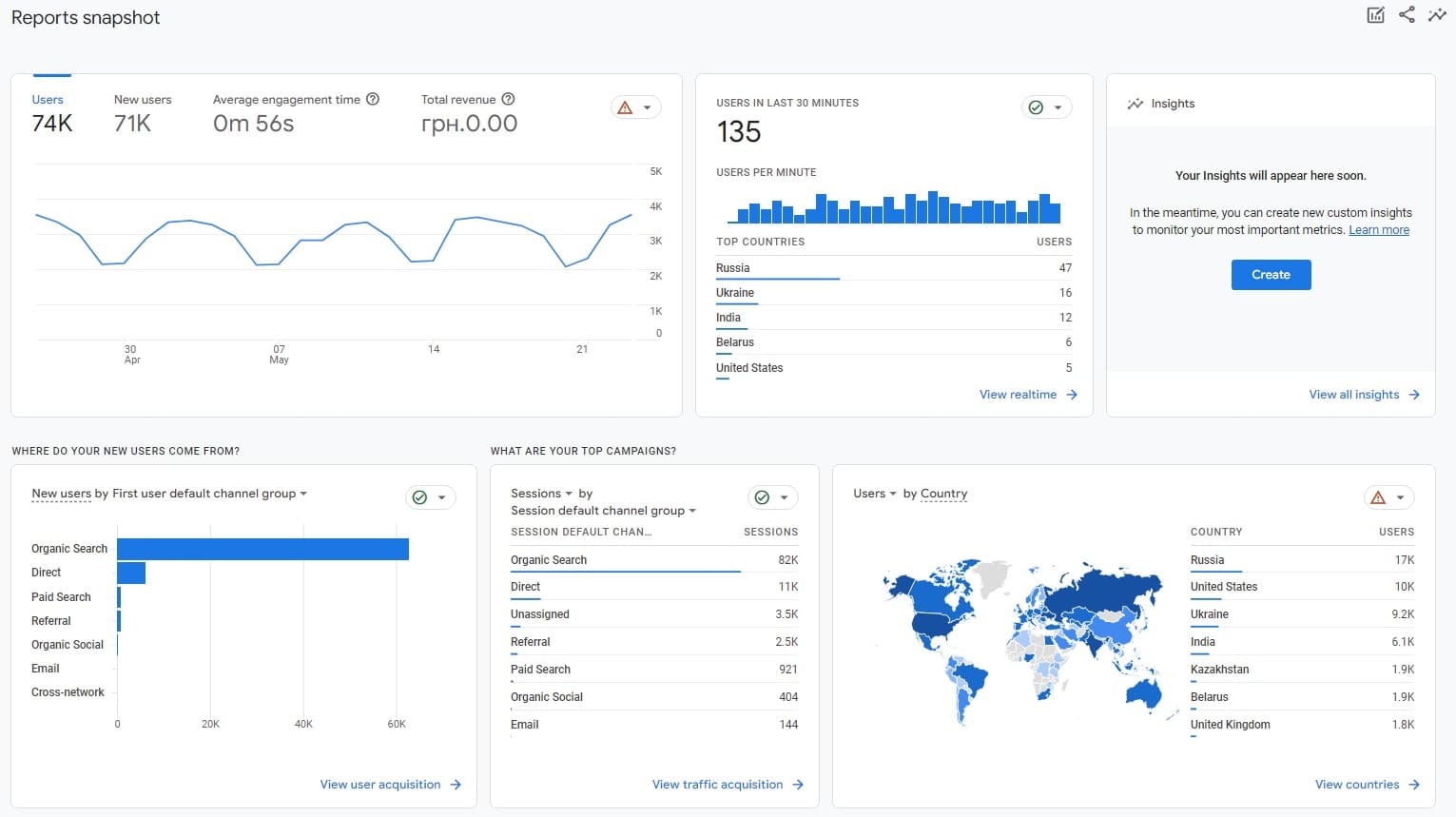
Your website serves as the hub of your online presence. Yet, you need more than an attractive layout and engaging content to increase website traffic. The real trick lies in understanding your visitors behaviors and preferences with your website. This is where analytics comes in, offering a treasure trove of data to help you refine your strategies and drive more traffic.
13.1. The Influence of Analytics on Understanding Your Audience
Imagine running a home decor e-commerce store. By studying analytics, you notice a trend of high weekend traffic, with most visitors showing interest in eco-friendly products. With these insights, you can align your marketing efforts to this pattern, introducing weekend sales or promoting eco-friendly items more heavily. In doing so, you cater directly to your audience’s preferences and behaviors, thus driving more target traffic to your website.
Analytics gives you a window into your audience’s journey through your website, providing you with invaluable data to shape your content and marketing strategies. But how do you tap into this?
13.2. How to Use Analytics to Drive Traffic
Here are actionable steps on how to use analytics to gain audience insights and increase website traffic:
- Determine Your Key Metrics: Identify the critical parameters that matter most to your business. This could include bounce rates, page views, session durations, or conversion rates. A blogging site could prioritize metrics like average time on page and return visitors.
- Study Visitor Demographics: Analytics can provide detailed demographic information, such as age, gender, geographical location, and interests. Understanding who visits your site helps tailor your content and marketing efforts to appeal to them.
- Analyze Visitor Behavior: Look at how users interact with your site – the pages they visit, how long they stay, and their actions. This can reveal what’s working on your site and where improvements are needed.
- Track Traffic Sources: Understand where your visitors come from – direct visits, search engines, social media, or referral sites. Knowing your primary traffic sources can help you focus your marketing strategies.
- Leverage A/B Testing: Use analytics to test different elements on your website and see what performs best. For instance, test two call-to-action buttons to see which drives more conversions.
With these steps, you can gather valuable data about your audience and their interactions with your website. But what’s the real impact?
13.3. Amplifying Traffic through Audience Understanding
Let’s take a tech startup that’s just launched an innovative app. Using analytics, they find that most of their traffic comes from tech-savvy millennials interested in efficiency tools. With this understanding, they can create targeted content – blog posts about productivity hacks or social media campaigns about the benefits of their app. As they cater to their audience’s interests, they will likely see an uptick in website traffic.
In sum, analytics gives you a bird’s-eye view of your audience’s behaviors and interactions with your site. By tapping into this wealth of data, you can refine your strategies to better cater to your audience’s needs and interests, ultimately driving a significant increase in website traffic. So, embrace analytics and let the data guide you to traffic growth.
14. The Impact of Mobile-Friendly Website Design on Traffic Growth
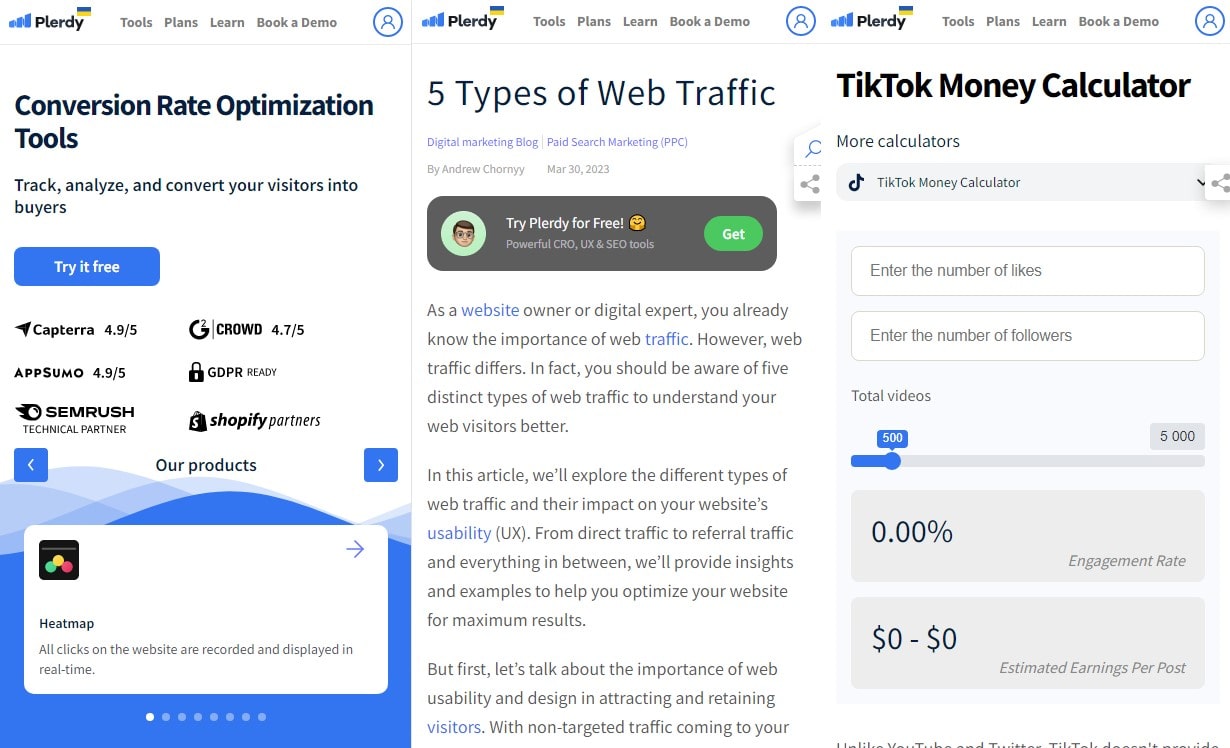
In the era of smartphones, tablets, and other hand-held devices, accessibility is key. This couldn’t be truer for your website, where mobile compatibility isn’t merely an extra feature – it’s a necessity. Implementing a mobile-friendly website design is critical in increasing traffic and ensuring your site’s success.
14.1. How Mobile-Friendly Website Design Influences Traffic
Imagine you run an online bookstore. A potential customer stumbles upon your website via a search engine on their smartphone. If they struggle to navigate, find it slow to load, or can’t read the text because it’s too small, chances are they’ll leave. This not only loses you a potential sale but also increases your bounce rate, which could hurt your site’s ranking on search engines. In contrast, a mobile-friendly design could have held their attention, potentially converting them into customers.
So, the question arises – how can you ensure your website is mobile-friendly to increase traffic?
14.2. Guidelines to Implement Mobile-Friendly Design
Here are some pivotal steps in implementing a mobile-friendly website design that can help increase traffic:
- Responsive Design: Opt for a responsive design that adjusts automatically to fit any screen size. This ensures your website maintains its functionality and aesthetics on all devices.
- Optimized Images: Large image files can cause your site to load slowly on mobile devices. Optimize your images to speed up loading times, keeping mobile users on your site.
- Simplified Navigation: Simplify your site’s navigation. Make it easy for mobile users to find what they’re after with clear, easy-to-tap menus.
- Accessible Content: Make your content easily readable on smaller screens with larger fonts and succinct paragraphs.
- Fast Load Times: A slow-loading website can cause users to bounce. Optimize your website’s speed to ensure quick load times, enhancing user experience.
The benefits of these changes can be significant.
14.3. Upping Traffic with Mobile Compatibility
Let’s say you run a travel blog. By implementing a mobile-friendly design, your blog becomes easily navigable for a traveler on the go. They can smoothly flip through your posts, take in vivid, optimized images, and easily tap the contact button to inquire about a travel tip. With a positive user experience, they’re likely to return, boosting your website traffic.
In addition, having a mobile-friendly website increases your chances of ranking higher on search engines, particularly since Google favors mobile-friendly websites. A higher search ranking invariably leads to more visibility and increased traffic.
In the digital landscape, adopting a mobile-friendly design isn’t an option – it’s a necessity. It’s an essential strategy to attract mobile users, improve user experience, and drive more traffic to your website. A well-implemented mobile-friendly design can make your website accessible, attractive, and user-friendly, laying the foundation for increased website traffic. Embrace mobile-friendly design, and watch your traffic figures go through the roof.
15. Fostering Growth Through User Reviews and Testimonials
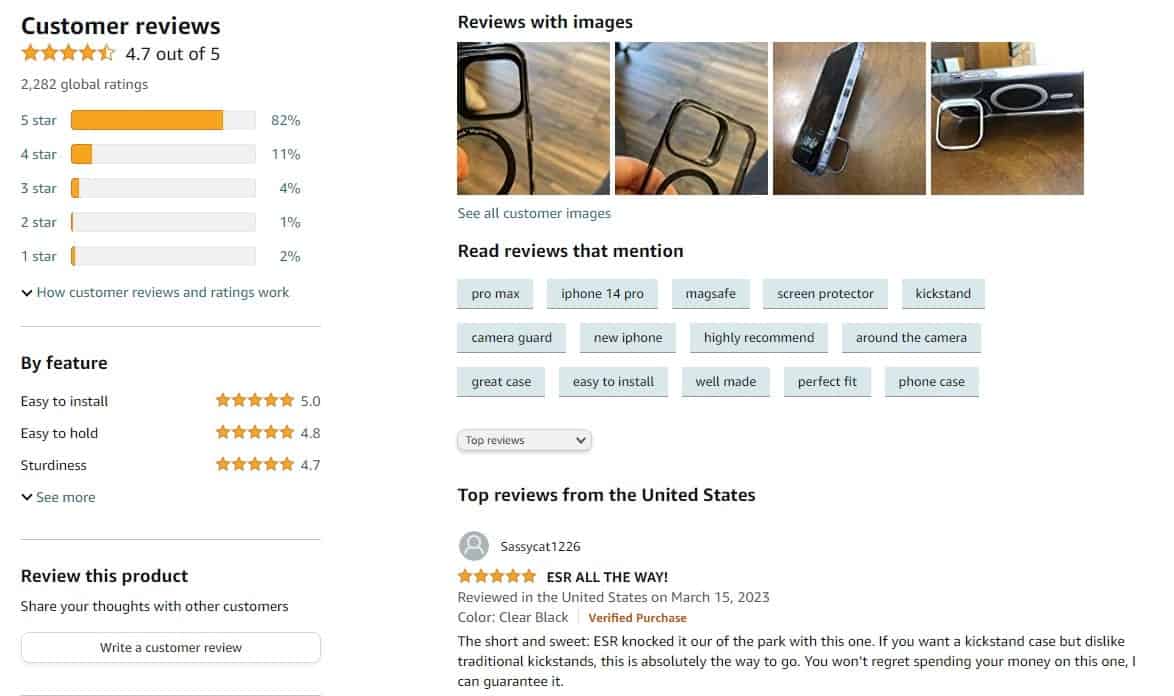
Words have power – and in the digital landscape, none more so than users’ words. User reviews and testimonials serve as authentic endorsements of your pages. They can build trust, enhance reputation, and help to increase traffic to websites.
15.1. The Role of Reviews and Testimonials in Traffic Growth
Consider the potential of a fitness blog that hosts testimonials of people who have transformed their lives following the blog’s advice. These personal accounts act as social proof, reinforcing the credibility and value of the website’s content. Other users, drawn in by these positive experiences, are more likely to visit the website and engage with its content, leading to an increase in traffic.
15.2. Effective Tactics to Encourage Reviews and Testimonials
To reap the benefits of reviews and testimonials, it’s essential to make the process of leaving them as straightforward as possible. Here are some effective strategies to encourage users to share their experiences:
- Request Feedback Post-Purchase or Interaction: After customers have used your product or service, kindly ask them for feedback. An easy-to-fill form or a quick survey can be a great way to collect user reviews.
- Offer Incentives: A discount on the next purchase or an entry into a giveaway can motivate users to leave a review.
- Feature Testimonials Prominently: Show that you value customer feedback by featuring testimonials on your website’s home page or a dedicated ‘reviews’ section.
- Respond to Reviews: Engage with users by responding to their reviews. It shows you value their opinion, which can encourage more reviews.
Remember, authenticity is key. Ensure all reviews and testimonials are genuine to build genuine trust and credibility.
15.3. Unleashing the Potential of User Testimonials
Let’s consider a scenario. A user stumbles upon an online clothing store. The store’s website features a section for reviews where customers express their satisfaction with the quality of the clothes and the excellent customer service. Seeing these testimonials, the user decides to explore more and purchase.
The presence of positive reviews and testimonials acts as social proof and leads to an increase in website traffic. It can also boost your website’s SEO ranking as it keeps users engaged, leading to longer site visits and more interactions, both of which are favored by search engine algorithms.
The power of user reviews and testimonials should be considered. They’re an invaluable tool in building a strong online reputation and an excellent way to attract and engage more users. A well-deployed strategy to encourage user reviews and testimonials can increase trust, improve user engagement, and significantly increase website traffic. The words of your users could be the key to your website’s growth – unlock their potential today.
Bottom Line
After this enlightening journey through the labyrinth of web traffic-boosting techniques, you’re now equipped with powerful strategies to elevate your site’s visibility. ⚡ Implement these techniques, from engaging forum discussions and stimulating infographics to insightful guest articles on like-minded websites. You will set your website on a trajectory of unparalleled traffic growth.
Remember, this isn’t a one-and-done effort. Continually refining and enhancing these strategies is essential for ongoing success. Each tweak, each modification, and each viral moment triggered can make a significant difference. Let’s not forget the paramount role of quality tools like Plerdy in this journey, providing key UX & SEO insights to ensure your site remains as user-friendly and optimized for usability.
Time to roll up your sleeves and make the Internet your domain. Keep applying smart techniques, consider every metric, and listen to your audience, and your traffic figures will multiply. Ready to increase your website traffic with Plerdy? Give their game-changing tools a whirl today!
